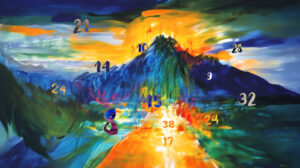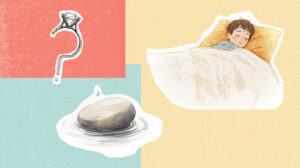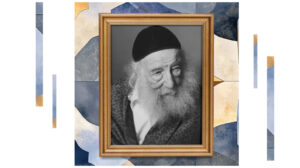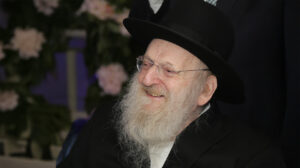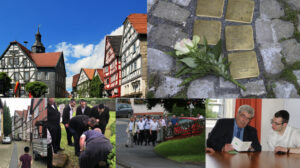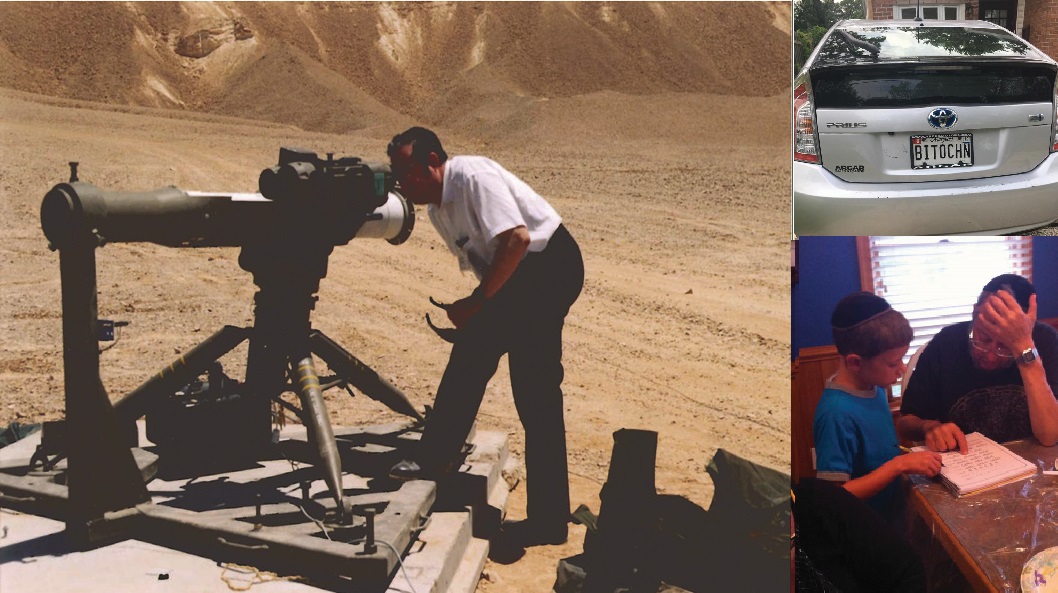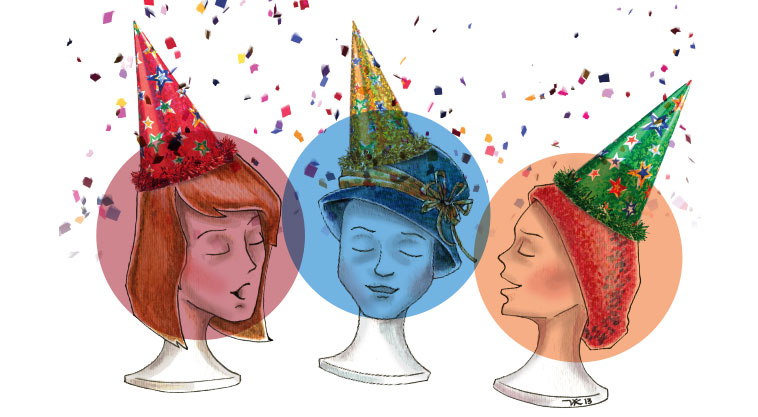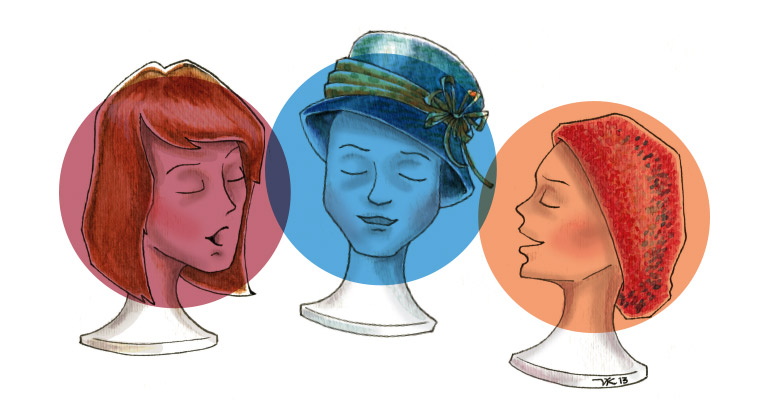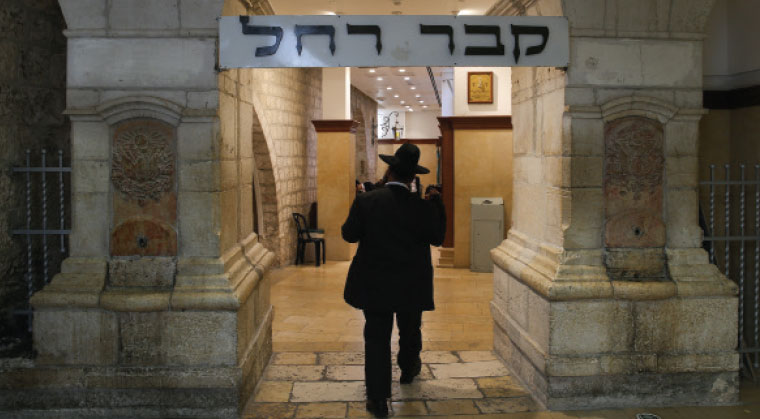Tales from Mother Russia

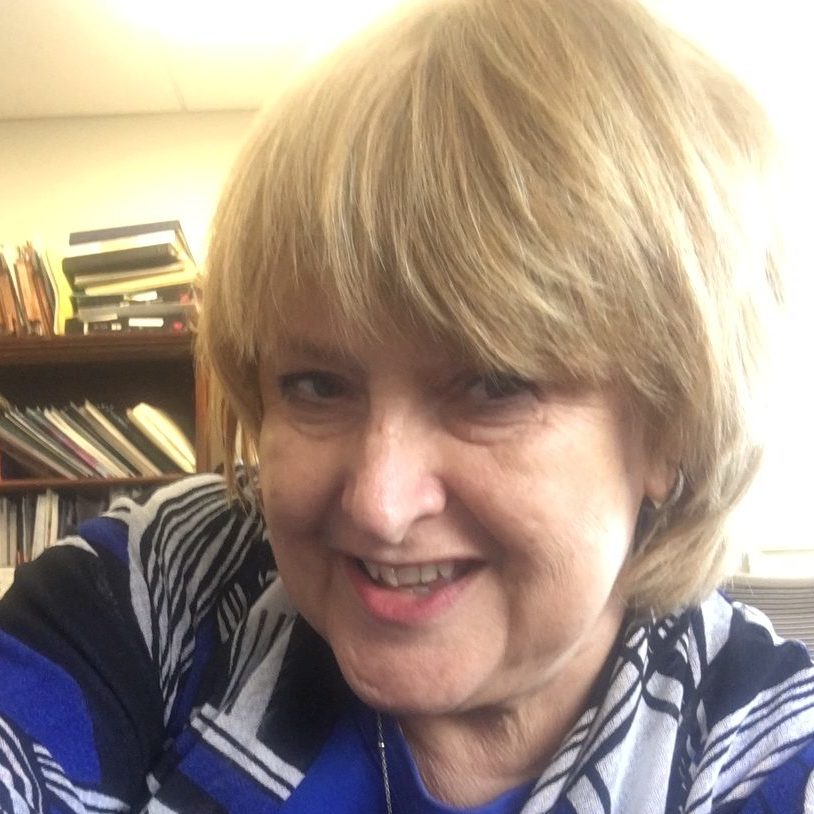


“Russia is a riddle, wrapped in a mystery, inside an enigma…” Winston Churchill, in his famous 1939 radio address, understood that if you want to understand Russia, the first thing to understand is that you will never understand it.
Its mysteriousness, though, is what makes Russia such a wellspring of rich and varied stories. So when Marcia mentioned that she’d like to write a profile of “Babba Ida,” a kindhearted Russian Jewish grandmother who’d babysat for her daughter, it didn’t take more than a few moments for Emmy Leah and Miriam to find their own Russian connections.
Russians are famous for their wooden dolls. Open the beautifully decorated doll and find… a smaller, beautifully decorated doll concealed within. Open that, and find a still smaller doll.
Like those “matryoshka dolls” (bet you didn’t know they had a name), our Schmoozes also uncover hidden secrets: the heroism of an “ordinary” Russian Jew; the long-buried terror of Russian aggression; a “gam zu l’tovah” that took decades to reveal itself.
Fasten your fur hat earflaps, slip your hands into a cozy muff, and wrap your babushka around your head as the Sisters travel to the icy land of the Russian bear.
Marcia recounts the journey of “Babba Ida” bas Aharon a”h…
A Tale of Candles, Kasha, and Borscht
1997, a typical day after work. I arrive at the tiny garden apartment where three-year-old Leah has spent a happy afternoon after preschool with her babysitter Babba Ida (pronounced Eda). I kiss and hug my girl, listen to her day’s adventures. Then Babba sits me down and insists I eat her tasty borscht. After a stressful day at work, it’s nice to feel mothered.
We converse in Yinglish — a combination of Babba’s poor English and our mutual childhood Yiddish — mine quite rusty, hers totally tzebrochen (fractured). It starts with the details of Leah’s day. “She no like the kasha, so I make her potatoes.” “She play outside with neighbor’s girl.” “She color picture.” “She listen to Russian news.”
“You like my borscht?” she asks. “Just like my mama made.” She then starts to reminisce…
***
1941, Ida is 16 when the Nazis invade the Soviet Union. She, her parents, and her ten-year-old sister decide to outrun them. Many Jews in their small Ukrainian village refuse to leave, denying the imminent danger. But Ida’s parents believe the rumors. (Years later, they learn that everyone who stayed behind vanished.)
They head east. At one point, they’re on a steamboat. It’s Friday night, and Ida is worried. Her mother, who’s always lit Shabbos candles in secret, is determined to bentsh licht on the boat. But the boat is overflowing with refugees from all over Europe. No cabins. Everyone on deck, sleeping in the open. What if there are spies among the wretched crowd? Undeterred, her mother finds a corner in which to light.
Suddenly, Ida spots three young men approaching. She trembles…
The three men turn out to be Polish Jews, brothers, drawn to this brave Russian woman taking a big risk in her public display of religion. From that point on, the two families are inseparable.
They continue eastward. Next stop: a small town where they all toil in government fields, sleep in government-assigned homes, stretch out meager government rations — sometimes just a slice of bread.
Finally, they reach their destination: Kyrgyzstan, part of the Soviet Union.
***
1942–1989. Ida, her older sister (who joins them later), and their Polish friends study at a veterinary college. The war ends, the college moves to Leningrad, along with Ida and her fellow students. After graduation, Ida and her older sister marry two of the “boat” brothers.
Ida and her husband are assigned to Pskov, a small town near Leningrad. For the next 12 years, the young couple, Ida’s mother, and eventually their two daughters live in one small room of a house. They share a kitchen and bathroom with five other families. Still, Ida manages to house out-of-town guests. She supplements their income by doing alterations, and feeds soup and kasha to her customers.
The Pskov Jews know nothing of kashrus. Yet… Ida manages to keep kosher in her part of the kitchen; Ida’s mother bakes Pesach matzah in a tiny electric oven; Ida’s husband puts on tallis and tefillin daily — all in secret.
They finally get their “own” (government-owned) apartment where they raise their daughters, who eventually get married under “secret chuppahs.”
***
1989. Finally, Jews can emigrate! Sadly, Ida’s husband passes away a year before their visas come. She arrives in America, along with her children, as a widow. But she’s proud: Now she can keep a kosher kitchen openly. She enrolls in English and Hebrew classes and takes on babysitting jobs to help pay her subsidized rent.
***
Back to 1997. I’ve finished my borsht. Satisfied that I’ve been well-fed, Babba switches to the next part of our daily ritual: reviewing her tzedakah mail. I translate each letter, we discuss each organization’s merits, and she painstakingly writes several $5 checks.
Finally, I bundle up Leah and drive them both to the supermarket. Shopping together, I make a disturbing observation: Babba picks up each item, examines its price, and undergoes an obvious internal struggle: Put it into the cart? Or back on the shelf? The item — sometimes a basic staple — often goes back onto the shelf.
I marvel. What a giving, nurturing woman, who puts others’ needs before her own. I thank Hashem: After giving Leah two amazing biological babbies to emulate, He’s now given her a third.
Miriam visualizes…
The Color of Fear
It was during the terror-filled, tear-filled days of Israel’s Second Intifada that I met my fears face-to-face. I learned that my fears had both color and shape. And that, weirdly, they spoke a language.
That language was Russian.
***
The Intifada was a tough time for all, but particularly for Jewish mothers. They’d send their kids to orthodontist appointments, birthday parties, and school — and pray for their survival every time they bid a child goodbye. That’s because other mothers of children were sending their youngsters to blow up themselves — and others — in buses, hotel lobbies, discotheques.
My kids were teenagers, exploring the world, taking their steps to independence: an especially hard time for a mom gifted with an overactive worrying gene. As the list of kedoshim, victims of Arab terror, grew longer, my fears grew greater. I couldn’t sleep, I hated letting my teens out of my sight.
It got so bad that I decided to try something totally foreign to my skeptical Brooklyn heritage. I’d once met Shoshana, a friend of a friend, and I’d found her to be unusually empathetic and understanding. I’d heard she sometimes helped people overcome their anxieties through something called guided visualization.
I decided to give it a try.
***
We met just once. Like Shoshana herself, it was a comforting and understated encounter: a soothing voice, quiet music, gentle questions. Defenses came down and slowly, so slowly, memories came rushing in.
I was in a relaxed, almost trancelike state. We talked about many things — my childhood and my children, my hobbies, my love for Eretz Yisrael.
Finally, we talked about my fears.
“Think about the thing that frightens you most,” Shoshana said in a half-whisper. “What does it look like?”
What does fear look like?
“Think about its color.”
I visualized it. It was black. Very black. But it was also a startling bright yellow.
“Does it have a shape?”
That was easy: triangles.
The triangles, the blackness, the yellowness, all rushed into my vision.
Suddenly I was awake. And I knew what my fear looked like.
Yellow background. Black circle. Yellow triangles. And on the bottom, a black strip with bold yellow words.
FALLOUT SHELTER.
My fear.
***
In the late ’50s, the Cold War was chilly, very chilly. Relations between Russia and the United States had deteriorated so badly that nuclear war seemed almost inevitable. Schoolchildren were drilled to hide under their desks in case of atomic bomb attacks, and throughout the country areas were marked as “fallout shelters,” where citizens would run when the bomb fell.
In the ’60s, though, when I was growing up, the world had gotten a reality check. With the exploding of an experimental hydrogen bomb thousands of times more powerful than the ones that had obliterated Hiroshima and Nagasaki, it became clear that a school desk wouldn’t be much use when the Big One came flying down on our heads. The long-term effects of radiation were becoming clearer, and fallout shelters, too, seemed no more effective than an umbrella in a tsunami. By the time I was a little girl, there were no more drills. The shelters were left to the spiders and other creepy creatures.
And yet, as I discovered, the fear of Russian bombs had clearly taken root deep in my heart.
***
Was the visualization a success? Partially, yes. I was so fascinated at uncovering this wholly unexpected fear lurking in my psyche that it took my mind off more current dreads. For so many years, I realized, a part of me was afraid of something that had never happened. Perhaps, I reasoned, today’s fears, too, were simply a waste of energy.
But it was only as years passed, and I began to seriously study works such as the Chovos HaLevavos’s Shaar HaBitachon, that I realized that fear has no place in a world where Hashem rules. That He is watching us with compassion, whether we are facing atomic bombs, Iranian missiles, or simply crossing the street.
And that Hashem’s hashgachah is much more powerful than my fears, whatever language they may speak.
Emmy Leah translates …
Mother Tongue, Russian (Among Others)
When’s the last time you read a book of 1,300 pages? And in two languages, neither one your mother tongue?
My mother, Rose (Raizel) Stark a”h, knew eight languages. She didn’t learn them in college or at Berlitz. History was her teacher, and while some lessons came hard, after many decades it became clear that Hashem had arranged the curriculum…
***
My mother had five sisters and a brother. Some were Hungarian, some Russian, some Czech. And all were born… in the same Yiddish-speaking house. In the tempestuous years of the first half of the 20th-century, Munkacs changed hands often, and official languages changed with each twist of history.
When young Raizel went to school, the language of instruction was Russian. Her sister, a year older, learned in Czech. As a girl, Mommy resented that. She admired the Czech people, who’d emancipated their Jews, and wished she could learn in their language.
But Russian it was for Raizel, though it was a language she had no use for.
Until history intervened …
***
After enduring the horrors and uncountable losses of her year in Auschwitz, newly orphaned and widowed, my mother again encountered the Russian language in Sweden, where she’d been sent for rehabilitation after the war. Munkacs was now Russian, and a representative of the Soviet government tried to convince her that she should go “home.”
“I will never return…” she told him. “There’s no one to go home to.”
And that was that for Russian. Mommy dreamed of going to Palestine, but Jews in DP camps got priority. Instead, relatives from the United States sponsored her, and Mommy added English to her language repertoire.
Her refusal of Russian “hospitality” led to more than just a new language. When Jews in post-War Russia were being exiled to Siberia for the crime of lighting Shabbos candles, Mommy’s leichter shone openly and brightly in her Brooklyn home. And when Jewish children in Russia were being taught that religion was “the opiate of the masses,” Mommy’s children — my sisters and I — were learning the Alef Beis and singing, “Torah, Torah, Torah” in Bais Yaakov.
***
Mommy was now a proud American. But history — and the Russian language of her youth — hadn’t finished with her. It took half-a-century, but at age 72, she fulfilled her dream, and moved to Israel.
At the same time as a million newly-freed Russian Jews.
Fifty years earlier, Mommy had chafed at learning Russian. Half-a-century later, she understood that her linguistic fate was part of Hashem’s plan. After 50 years, Mommy again chatted with Russian speakers.
Not the anti-Semitic teachers of her Russian school in Munkacs. Not the Russian official trying to convince her to return to the town which Communists turned into an atheistic desert. No, 50 years later, Mommy’s long-dormant Russian resurfaced so she could speak with her own people. Russian-speaking nurses cared for her when she was hospitalized; Russian cashiers helped her find unfamiliar products on supermarket shelves; Russian bus drivers told her when she’d reached her stop.
Even more impressive… Mommy also used her Russian to help others. At her ulpan, she relished her role as interpreter between new olim, retirees who spoke only Russian, and the teacher, who spoke only Hebrew and English.
After a year at ulpan, Mommy invited her Russian friends to her house. Knowing Russian culture, she bought a bottle of vodka to celebrate their “graduation.” She placed a container of orange juice next to the bottle.
“In America, they drink vodka with orange juice. A screwdriver, it’s called,” explained my Yiddish-Czech-Hungarian-Russian-German-Swedish-English-Hebrew-speaking mother.
“In Russia, we think it’s fine by itself,” her Russian friends replied. “Nazdrovia!”
“L’chayim,” Mommy answered, smiling.
***
In an Israeli used-book shop, Miriam found a treasure: an English language copy of the 19th-century novel, The Count of Monte Cristo. Mommy, always an avid reader, read through it — and then discovered that the 600 page tome was only Volume One. Miriam raced back to the bookstore and found a copy of Volume Two — in Russian.
No problem. Mommy finished the novel in the language of her Munkacs school, sitting on her mirpeset in her beloved Yerushalayim.
A happy ending in any language.
…. הסוף Конец…. Das Ende…. Slutet…. The End…. . Konec…. Vege……. דער סוף.
(Originally featured in Family First, Issue 625)
Oops! We could not locate your form.

